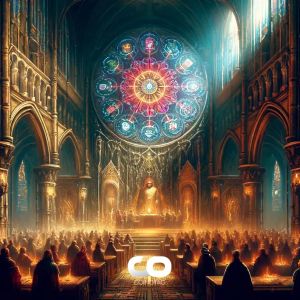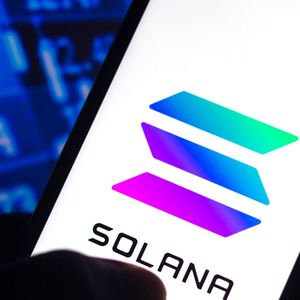In the fast-evolving landscape of digital creation and decentralized platforms, the tools we use to build and express ourselves are constantly advancing. For developers and innovators exploring the possibilities within Web3, NFTs, and digital art markets, access to cutting-edge AI capabilities is becoming increasingly vital. That’s why the recent announcement regarding the OpenAI API is particularly noteworthy. OpenAI has officially made the technology powering its significantly upgraded image generation feature in ChatGPT available to developers via its API. This move allows creators, businesses, and platforms to integrate this powerful capability directly into their own applications and services, opening up a new realm of possibilities for automated content creation, digital asset generation, and enhanced user experiences. How is the OpenAI API Powering New Creations? The image generation feature, which rolled out to most ChatGPT users in late March, quickly captured global attention. It became known for its impressive ability to create images in distinct styles, such as realistic Ghibli-style visuals or unique ‘AI action figures.’ The sheer popularity demonstrated a massive public appetite for accessible, high-quality AI Image Generation . OpenAI reported staggering initial usage, with over 130 million ChatGPT users creating more than 700 million images in just the first week of the tool’s availability within the chatbot interface. While this success led to millions of new signups, it also placed considerable strain on OpenAI’s infrastructure capacity. Now, this viral capability is accessible programmatically. Developers can tap into the same underlying technology that fueled that initial surge of creativity. This means that the potential for generating unique visual content on demand is no longer confined to the ChatGPT interface but can be woven into countless other digital environments, from creative design tools to e-commerce platforms and beyond. Understanding Generative AI Through gpt-image-1 At the heart of this new API offering is the AI model known as GPT Image 1 . Unlike some earlier models focused solely on text, gpt-image-1 is described as a natively multimodal model. This means it is designed from the ground up to understand and work with different types of data, particularly text prompts leading to image outputs. Its capabilities are quite sophisticated, allowing it to: Create images across a wide range of distinct styles. Follow complex and custom guidelines provided by the user or developer. Leverage world knowledge to generate relevant and contextually appropriate visuals. Render text within the generated images, a capability that has historically been challenging for AI image models. For developers, this level of control and flexibility is crucial. It moves beyond simple ‘text-to-image’ functions towards a more nuanced and powerful form of Generative AI that can be tailored to specific application needs and user requirements. The ability to incorporate custom rules and leverage broader knowledge bases means the outputs can be more precise, relevant, and aligned with desired outcomes. What Does AI Image Generation Mean for Development? The release of the image generation capability via the OpenAI API marks a significant moment for AI Development . It provides developers with a powerful new primitive to build upon. Instead of needing to train or manage complex image generation models themselves, they can leverage OpenAI’s pre-trained and continuously improving technology. This significantly lowers the barrier to entry for integrating advanced visual AI into applications. Developers using the gpt-image-1 API gain several key controls: Batch Generation: The API allows for generating multiple images from a single prompt or request, increasing efficiency for applications requiring numerous visuals. Quality Control: Developers can specify the desired quality level for the generated images. Higher quality may take longer to process but yields more detailed results, while lower quality is faster and less expensive. This allows for optimization based on the specific use case (e.g., quick previews vs. final assets). Moderation Sensitivity: OpenAI has implemented safety guardrails, similar to those in ChatGPT, to prevent the generation of content violating their policies. Developers can adjust the sensitivity of these filters. Regarding moderation, OpenAI provides options for sensitivity: Setting Description Filtering Level Auto Standard filtering based on OpenAI’s policies. Standard Low Less restrictive filtering, limiting fewer categories of potentially age-inappropriate content (per OpenAI documentation). Reduced Restriction This level of control over moderation is important for developers integrating the technology into diverse platforms with varying content requirements and user bases, though it still operates within OpenAI’s overarching safety framework. Another critical safety feature highlighted by OpenAI is the inclusion of C2PA metadata watermarking on all images created with gpt-image-1. The Coalition for Content Provenance and Authenticity (C2PA) standard aims to provide a secure way to track the origin and history of digital content. By embedding this metadata, images generated by gpt-image-1 can be identified as AI-generated by supported platforms and applications, promoting transparency and helping to combat the spread of deceptive AI-generated content. Deep Dive: Pricing and Features of GPT Image 1 Understanding the cost structure is essential for developers planning to integrate GPT Image 1 . OpenAI uses a token-based pricing model, which measures the raw bits of data the model processes. The pricing is structured as follows: Input tokens (text prompts): $5 per million tokens. Input tokens (for image-to-image tasks, though the focus here is text-to-image): $10 per million tokens. Output tokens (the generated image data): $40 per million tokens. OpenAI also provided example costs per generated image for square images at different quality levels, offering a more tangible sense of the expense: Low-quality square image: Approximately 2 cents per image. Medium-quality square image: Approximately 7 cents per image. High-quality square image: Approximately 19 cents per image. These prices give developers a clear basis for estimating costs and building pricing models for their own applications that incorporate AI image generation. The tiered pricing based on quality allows for flexibility, enabling developers to offer different levels of service or optimize costs for specific tasks. The potential applications are vast. Several major companies are already using or experimenting with gpt-image-1 through the OpenAI API . These include creative powerhouses like Adobe and Canva, productivity platforms like Airtable and Wix, e-commerce facilitator Instacart, and web presence builder GoDaddy, as well as design tool Figma. Specific examples demonstrate the practical utility: Figma: The popular design platform is now enabling users to generate and edit images directly within their workflow using gpt-image-1, streamlining the design process. Instacart: The grocery delivery service is testing the model to generate images for recipes and shopping lists, potentially enhancing the visual appeal and user experience for meal planning and shopping. These early use cases highlight the potential for AI image generation to automate content creation, personalize user experiences, and enhance the functionality of existing platforms across diverse industries. For developers in the crypto space, this could translate into novel ways to generate unique digital art for NFTs, create dynamic visuals for metaverse environments, or automate marketing material creation for Web3 projects. Conclusion: A New Era for AI-Powered Creativity OpenAI’s release of the gpt-image-1 model via its Generative AI API is a pivotal moment, democratizing access to advanced image creation technology. By making this powerful tool available to developers, OpenAI is enabling a wave of innovation across various sectors. The ability to integrate high-quality, controllable, and cost-effective AI image generation directly into applications removes significant technical hurdles for developers. With features like multimodal understanding, style control, moderation options, and C2PA watermarking, gpt-image-1 provides a robust foundation for building the next generation of creative and functional applications. As more developers integrate this capability, we can expect to see an explosion of new services and features that leverage AI to transform how we create, interact with, and utilize visual content in the digital world. To learn more about the latest AI trends, explore our article on key developments shaping AI features.
















